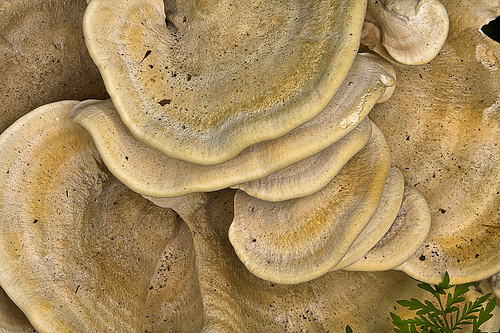By Anthony Biondi (The Cascade) – Email
Print Edition: April 11, 2012
We are a wasteful society; it’s a well-known fact. We throw away mountains of plastic that evolve into landfills – an issue that does not have a foreseeable solution. When one gets full we just move somewhere else. To make it worse, plastics take a very long time to break down; they sit in landfills, disrupting our ecosystem. As these mountains of discarded plastic grow higher, they represent a problem that will only get worse over time.
But according to a Digital Journal article by Anne Sewell, a group of students from Yale University found a fungus that digests and breaks down plastic. In other words, a fungus that can eat the plastic that lives under our landfills. A simple solution to the problem of our overflowing garbage? It could be.
I think it’s a terrible idea.
Sure, we have so much garbage we don’t know what to do with it – but is the introduction of a foreign organism the right choice? Bringing this fungus (known as Pestalotiopsis microspora) into an environment that isn’t adapted to it could have numerous negative effects on our own native ecosystem. It might have the ability to solve one of our greatest problems, but in the end it may ruin more than it fixes.
It is well understood that introducing new species into a new environment can cause problems, and this fungus is just the sort of wild card we don’t need. There are already a variety of animals that live around our landfills and other types of plants as well. These species are vital to our own ecosystem and its own natural balance; anything new threatens that fine balance. This new fungus may end up being poisonous to certain animals or plants here; it may secrete some sort of terrible chemical as a byproduct of plastic digestion that negatively affects birds or plants or subterranean animals; it may end up adjusting to an unexpected food source that is not plastic, something that is a primary food source to some other animal, and upset the food chain that way.
I believe that bringing this new fungus northward to deal with our own wasteful habits is a poor decision. We have so many other solutions that have been developed in order to combat the buildup of wasteful plastic. There are new biodegradable plastics that have a lowered decomposition time, and there have been interesting developments in Japan resulting with a machine that can convert plastic into gasoline, and we could simply use less plastic.
In the end, we don’t need this fungus to break down our plastics for us. It’s taking the easy way out to solve a problem that we don’t want to find another solution to. Why turn to a fungus to do our dirty work, when it is us that should be doing something about this problem? I, for one, don’t want to introduce a potentially destructive force into our environment when it isn’t necessary. It may be an interesting find, but I’m afraid that’s all it is. We need to find our solution elsewhere.


